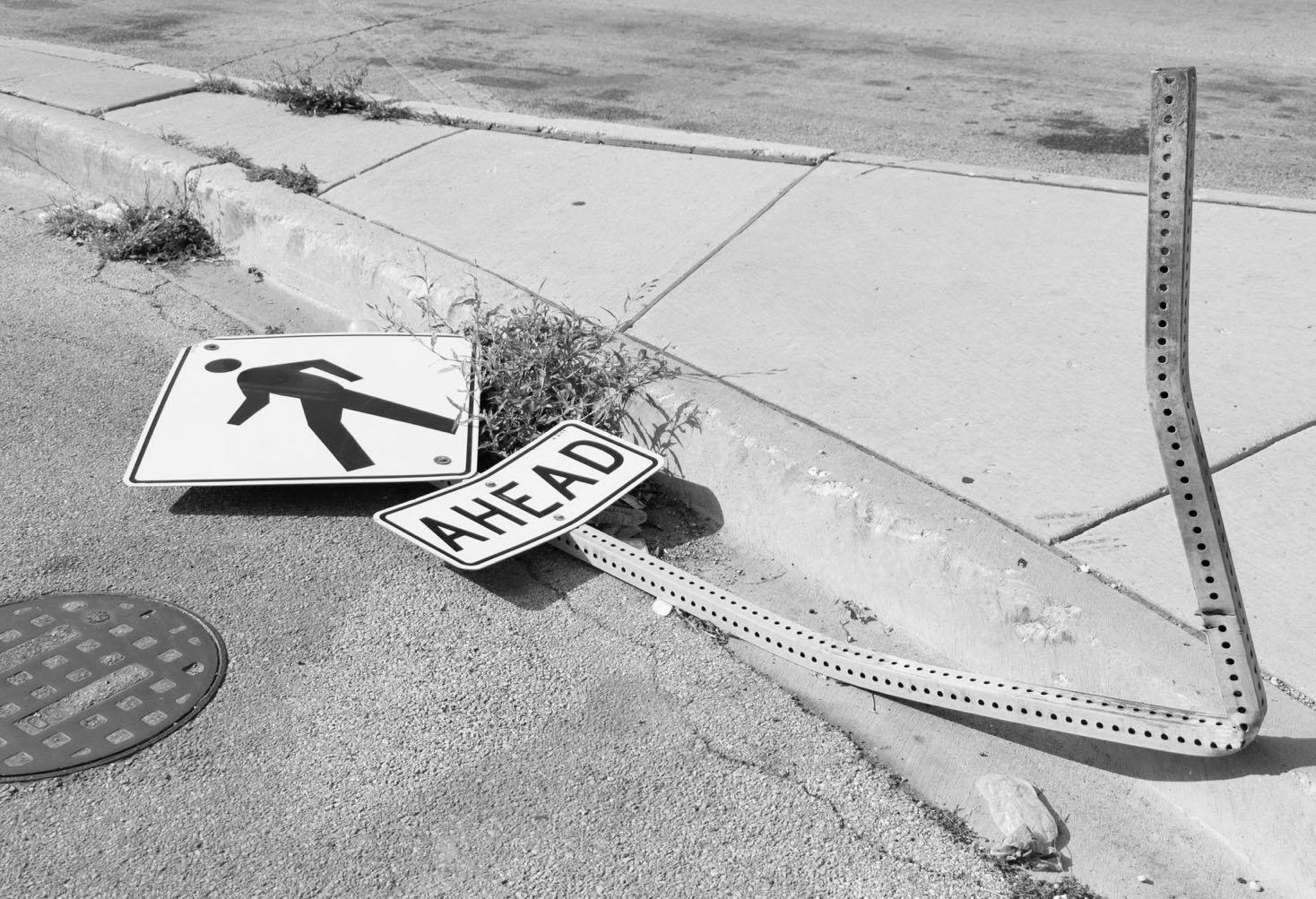
4 minute read
National pedestrian death stats grim
Drivers struck and killed at least 7,508 people walking in the United States in 2022 – the most pedestrian deaths since 1981 – according to a new report released today by the Governors Highway Safety Association (GHSA). The report also includes an analysis of 2021 data from the National Highway Traffic Safety Administration (NHTSA) that reveals a troubling safety disparity for people on foot: Pedestrian fatalities have skyrocketed 77% since 2010, compared to 25% for all other traffic-related deaths.
Earlier this year, GHSA released a preview of state and national pedestrian traffic deaths for the first six months of 2022, based on preliminary data reported by the State Highway Safety Offices (SHSOs) in 49 states and the District of Columbia (D.C.). The report warned that not only has the number of pedestrian deaths continued to rise over the past decade, but an uptick in dangerous driving behaviors that started in 2020 hasn’t abated, further endangering people on foot. This new, comprehensive report, Pedestrian Traffic Fatalities by State: 2022 Preliminary Data, provides a detailed look at projected pedestrian deaths for the full year using additional preliminary data provided by the SHSOs. The data analysis was conducted by Elizabeth Petraglia, Ph.D., with the research firm Westat.
The new report found that the projected 7,508 pedestrian deaths in 2022 was a 1% increase from the year before. Forty-nine states and D.C. provided pedestrian fatality data for the report; due to a technical issue, Oklahoma did not provide data. Considering that the state averaged 92 pedestrian deaths in recent years, the actual total number of U.S. pedestrian fatalities last year could be as high as 7,600. Nationwide, there were 2.37 pedestrian deaths per billion vehicle miles traveled (VMT) in 2022, continuing a troubling trend of elevated rates that coincided with the start of the pandemic.
“Every day, 20 people go for a walk and do not return home. These are people living their daily lives –commuting to and from school and work, picking up groceries, walking the dog, getting some exercise – who died suddenly and violently,” said GHSA Chief Executive Officer Jonathan Adkins. “The saddest part is that these crashes are preventable. We know what works – better-designed infrastructure, lower speeds, addressing risky driving behaviors that pose a danger to people walking. We must do these things and more to reverse this awful trend and protect people on foot. Enough is enough.”



The GHSA report also explains how the comprehensive Safe System approach can improve pedestrian safety and gives numerous examples of how SHSOs and their partners are incorporating Safe System principles into their pedestrian safety work. Some of the proven and promising approaches include designing and building safer roadways, engaging with people experiencing homelessness, focusing traffic enforcement on dangerous driving behaviors such as speeding and driving impaired or distracted, and educating novice drivers about their responsibility to look out for and yield to pedestrians and other road users.
Pedestrian Safety Trends, 2010-2021
The GHSA report also examines 2021 data from NHTSA’s Fatality Analysis Reporting System (FARS) to provide insights on trends regarding when, where and how drivers strike and kill people on foot. Findings include:
Most pedestrian fatalities continue to occur at night, although nighttime deaths have accounted for an even larger share over the past few years.
In 2021, 77% of fatal pedestrian crashes occurred in the dark, with approximately 20% happening in daylight and 3% during dawn or dusk.
Since 2010, nighttime fatal crashes have increased by 86%, compared with a 31% rise in daytime pedestrian deaths.
Drivers of passenger cars have consistently accounted for the greatest number of fatal pedestrian crashes. However, over the past decade the number of pedestrian deaths in crashes involving sport utility vehicles (SUVs) increased at a far faster rate (120%) than deaths in crashes involving passenger cars (26%). Because of their greater body weight and larger profile, SUVs and other light trucks can cause more harm to a person on foot when a crash occurs.
In 2021, 69% of pedestrian fatalities occurred in locations where no sidewalk was noted on the crash report, up from 59% in 2017 and continuing a steady upward trajectory in recent years.
The presence of sidewalks can help protect people walking by separating them from motor vehicle traffic, but additional infrastructure design considerations, such as raised crosswalks and traffic calming that slows vehicle speeds, can provide even more protection.
It is well documented that people of color are overrepresented in pedestrian fatalities. Although race and ethnicity data for 2021 pedestrian deaths were not available in FARS due to delays in processing death certificates, researchers looked at changes between 2018 and 2020. They found that the proportion of pedestrians whose race and ethnicity was reported as White non-Hispanic on their death certificate fell from 47% in 2018 to 41% in 2020, while the proportions rose for Black nonHispanic (from 19% to 20%) and Hispanic (from 20% to 21%) pedestrians.
The percentage of pedestrian deaths involving speeding was 8.1% in 2021, a slight decrease from the year before but higher than before the pandemic, when approximately 6-7% of pedestrian fatalities involved a speeding driver. The average risk of death for pedestrians increases exponentially the faster a vehicle is traveling, from 10% at 23 mph to 90% at 58 mph.

UCO students & unforgettable diving study tour

The University of Central Oklahoma and Sharky’s Scuba, a scuba-diving shop located in Moore, have collaborated on a study tour for students that focuses on leadership skills, ocean sustainability and climate awareness.
As part of Central’s leadership minor, the leadership in diving course equips students with the knowledge of sustainability issues related to healthy seas and oceans, including rising ocean levels, shark and coral conservation and responsible eco-tourism. Students have the opportunity to travel to Cozumel, Mexico, to apply the curriculum as a transformative learning experience. The collaboration with Sharky’s Scuba advances the university’s commitment to experiential learning, environmental conservation and the development of future leaders.
"This study tour has introduced our future leaders to a lifelong skill that encourages them to travel and embrace continuous learning,” said Alyssa Provencio, Ph.D., assistant professor, course co-creator and director of the leadership minor program at Central.
“It aligns with UCO's mission to develop globally competent graduates with a commitment to service. The lessons learned translate to any major and any career."

Students earn a Professional Association of Diving Instructors (PADI) Open Water Dive certification through in-class instruction, pool time at Sharky's Scuba and a lake certification dive. The study tour presents an opportunity for students to









